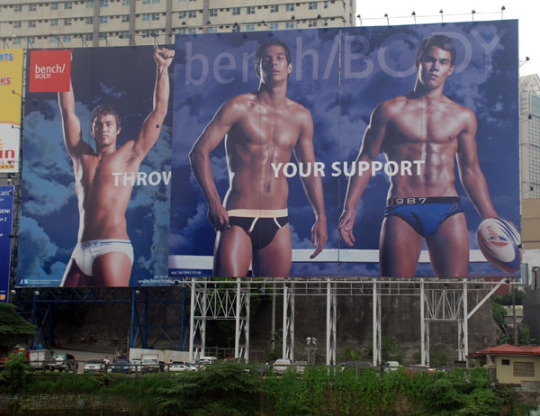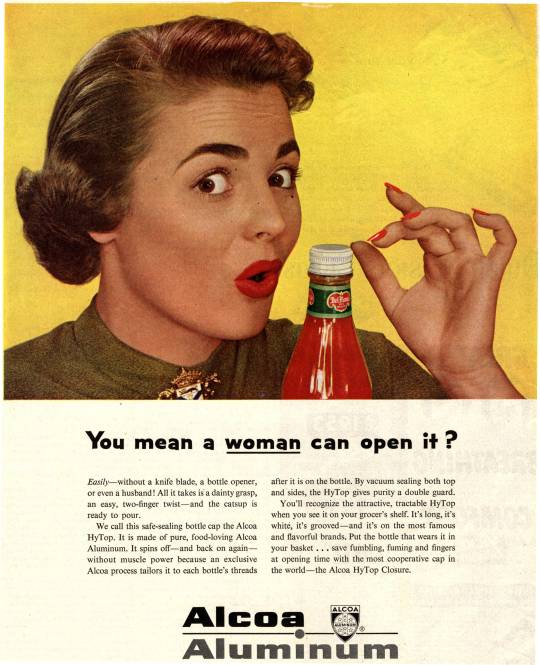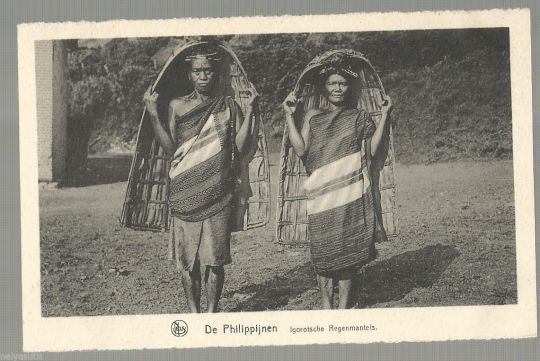#COMM10 Module4-Activity4
Explore tagged Tumblr posts
Text
Representation or Exploitation?

The listed articles all covered a series of sectoral representations in various print media. Reuben Cañente’s article entitled “Bench Underwear Ads and the Male Body,” covered the hypersexualization of men and the blatant visual erogenization of the Male body in Bench Underwear billboards and advertising. According to Cañente (2005), “Its display as a sexual cipher (in aid of commodity capitalism) does not fail to negate its ambiguity as for whom it is ultimately for: patriarchy or heterotopy; emergent homosexuality or hegemonic heterosexism.” In addition. while the emergence of such forms of advertising is a step towards the well-needed sexual liberation of society (especially that of the highly conservative Philippine society), the measures taken comes at varying expenses. Such expenses include that of its ties to capitalist production as well as hypermasculinity which also reinforces the culture of machismo in the country.

Meanwhile, Georgina Encanto’s article, “Women’s Magazines in English from 1920 to 1972: Instruments of American Hegemony” covers the use of Women’s Magazines to fortification American Hegemony and the subjugation of women under American colonial rule. Encanto (2004), elaborated on “how popular culture, which includes women’s magazines, colluded with the other ideological apparatuses (such as the family, the Church and the educational system) to mold the outlook and way of life of generations of Filipino women,” and emphasized on the detrimental effects of the aforementioned which includes the subtle cultural and ideological subjugation of Filipino Women, enabled by the lack of criticism and continued support, in the form of media consumption, for the ruling colonial capitalist.

Lastly, Anna Christie Torres’ article, “Igorot representation in Cordillera Picture Postcards,” unboxes the socio-political implications of picture postcards and how it bore the colonial design of conquest in their imagery. Torres whilst referring to Igorot Representation in Picture Postards, added: “In the context of Philippine history, therefore, they document colonial and capitalist encounters that framed and continue to frame the subject within the boundaries of primitive and exotic display.” She expounds on how the thematic representation of the Ifugao impeded their development and further naturalized their “primitivism” through the use of colonial narratives. She adds up on how postcards continuously exploit cultural representation at the expense of reinforcing colonial narratives of indigenous communities.
All of the aforementioned articles tackled the socio-political impact of media representation for varying sectors. For men’s underwear advertisement, there is the employed erogenization of the male bodies as well as the enforcement of hypermasculinity. For women’s magazines, it serves as a tool for desensitizing and exposing women to colonial ideas which eventually led to the colonial subjugation of Filipino women. For Cordillera Picture Postcards, there is the exploitation of the Indigenous community of the Igorot which has boxed them within a primitive and exotic identity shaped by colonial narratives. Such issues are the manifestations of capitalist exploitation of sectoral representation. While there is no stopping capitalist giants from exploiting representation for profit, it is imperative that we educate consumers on media content. Croteau and Hoynes (2003), emphasized this and stated,”we must fully asses the potential impact of media content, we must look at meanings actual audiences attach to the media they read, watch, and listen to,” which sums up on how we should address the matters at hand.
References:
Cañete, R. (2005). Bench Underwear Ads and the Male Body. Plaridel 2, no. 2, 69-92.
Croteau, D. & Hoynes, W. (2003). Media society : industries, images, and audiences (3rd ed). Pine Forge Press, Thousand Oaks, Calif
Tiongson, N., & Umali, V. (2004). Women’s Magazines in English from 1920 to 1972: Instruments of American Hegemony. Plaridel, 1(1), 1–30.
Torres, Anna Christie V. (2006). Igorot Representation in Cordillera Postcards. Plaridel 3, no. 1, 123-146
0 notes